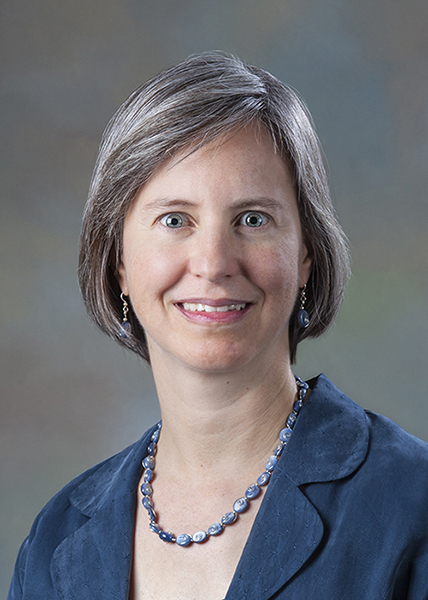ChE Seminar: Dr. Amalie L. Frischknecht
| Event Date: | October 2, 2018 |
|---|---|
| Speaker: | Dr. Amalie L. Frischknecht |
| Speaker Affiliation: | Sandia National Laboratories |
| Time: | 3:00-4:15 pm |
| Location: | FRNY G140 |
| Open To: | Attendance required for PhD students |
| Priority: | No |
| School or Program: | Chemical Engineering |
| College Calendar: | Show |
Principal Member of Technical Staff
Nanostructure Physics Department,
Sandia National Laboratories
"Morphology and Conductivity in Sulfonated Polyphenylenes"
 Dr. Amalie L. Frischknecht
Dr. Amalie L. Frischknecht
Principal Member of Technical Staff
Nanostructure Physics Department,
Sandia National Laboratories
"Morphology and Conductivity in Sulfonated Polyphenylenes"
Part of the Fall 2018 Graduate Seminar Series
Abstract:
Proton exchange membranes are critical for a variety of energy applications, including fuel cells and flow batteries. Proton conduction in hydrated, proton-conducting polymer membranes is highly affected by hydration level and membrane morphology. In this talk I'll describe our examination of morphology and dynamics in a promising proton-conducting polymer, a sulfonated Diels-Alder polyphenylene (SDAPP). We performed atomistic molecular dynamics (MD) simulations on a series of sulfonated polyphenylenes, systematically varying the degree of sulfonation and water content to determine their effect on the nanoscale structure, particularly for the hydrophilic domains formed by the ionic groups and water molecules. The static structure factors calculated from simulation are in good agreement with X-ray scattering data. At low sulfonation and hydration levels, clusters are more elongated in shape and poorly connected throughout the system. As the degree of sulfonation and water content are increased, the clusters became more spherical, and a fully percolated ionic domain is formed. We find from comparing impedance spectroscopy and NMR diffusivity measurements that the proton conduction mechanism evolves from being dominated by vehicular transport at low hydration and sulfonation to including a significant contribution from the Grotthuss hopping mechanism at higher hydration and sulfonation levels. I will discuss the connections among the hydrophilic domain morphology, the state of the hydrogen bonding network, and the conductivity.
Biography:
Dr. Amalie L. Frischknecht is a Principal Member of the Technical Staff at Sandia National Laboratories in the Nanostructure Physics Department and a staff scientist at the Center for Integrated Nanotechnologies. Her research has focused on the statistical mechanics and molecular simulation of complex fluids, including ion-containing polymers, polymer nanocomposites, and charged fluids. She uses a range of computational methods in her research, including classical molecular dynamics simulations, classical density functional theory, and polymeric field theory.
